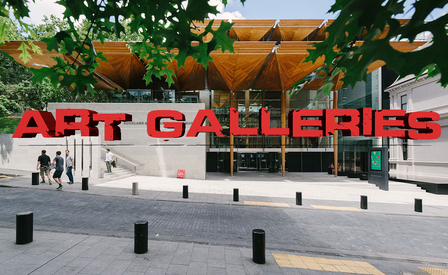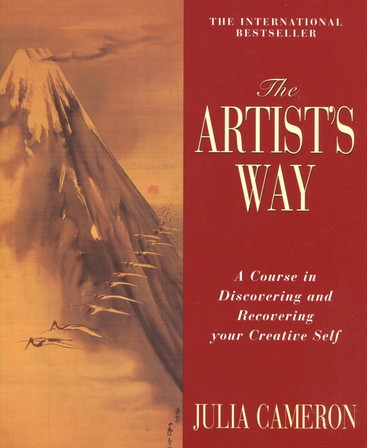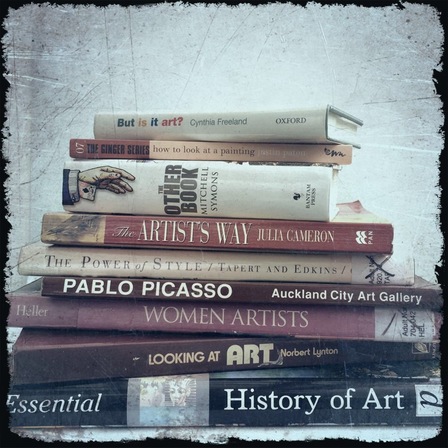12 Practical Tips: How to Deal with Artist's Block
Artist's block is similar to blank canvas syndrome, but it's not quite the same. While blank canvas syndrome is often about the intimidation of starting a new piece, artist's block is more pervasive. It affects your overall creative flow and makes it difficult to produce work consistently.
It's the feeling of being creatively stuck, where the ideas that usually come so naturally seem to vanish. Check out my blog post Blank Canvas Syndrome for more on blank canvas syndrome.
Understanding Artist's Block
As an artist myself, when I experience artist's block, I put my brushes down and do something entirely different for a while. Shifting my focus away from my art helps alleviate the stress, even when deadlines for commissions loom. Worrying about it defeats the purpose.
Finding Inspiration in Everyday Life
By taking a break, I start to appreciate the world around me again. The colours in my environment become more vibrant, and sunrises and sunsets take on new meanings. I begin to notice the forms of flowers, the vases they're in, and how the light interacts with everything.
I observe my own shadow and how it changes as I move. These simple observations reignite my inspiration, compelling me to capture these moments on canvas.
Embracing the 'Job' of Painting
Nowadays, painting is not just a hobby for me; it's a career. I have to paint even when I'm not feeling particularly creative. Interestingly, artist's block rarely occurs anymore, perhaps because I approach it as a professional obligation and simply "get on with it."
I understand it's not always that simple for everyone, so here are a few tips to help you along the way.
Tips to Overcome Artist's Block
1. Use a Big or Extra Long Brush
Using a big brush or an extra long brush makes it harder to add details, as you have less control. The goal isn't to create a masterpiece but to have fun. The broad, sweeping strokes force you to loosen up. Try working on large sheets of newspaper instead of your usual support.
2. Visit Art Galleries
Visiting art galleries can be incredibly inspiring. Seeing the work of others often provides the kickstart you need to get back to your own creative process. Art galleries are treasure troves of creativity, showcasing a wide range of styles, techniques, and subjects.
They offer a unique opportunity to immerse yourself in a world of artistic expression and gain fresh perspectives. Want to know how to get the best out of gallery visits? Read my article 'How to Get The Most Out of Visiting Art Galleries' here.

Look Through Old Work or Sketchbooks
Going through photos of your old work or sketchbooks from when you were inspired can reignite your creative spark. This method is helpful for several reasons:
Reflecting on Your Artistic Journey
Reviewing your past work allows you to see how far you've come as an artist. It's a visual representation of your growth, showcasing the development of your skills, techniques, and creative ideas. Reflecting on this journey can be incredibly motivating and remind you of the passion that initially drove you to create.
Rediscovering Forgotten Ideas
Sketchbooks often contain unfinished sketches, random doodles, and notes that you may have forgotten about. These forgotten ideas can be a goldmine of inspiration, providing a fresh starting point for new projects.
Revisiting these ideas can help you see them in a new light, with the added perspective and experience you've gained since you first created them.
Reconnecting with Your Original Inspiration
Your past work can remind you of what initially inspired you to create. Whether it's a particular subject, style, or technique, reconnecting with these original sources of inspiration can help you overcome your current creative block. It's about remembering what excited you about art in the first place and tapping back into that enthusiasm.
Identifying Patterns and Themes
By looking through your old work, you might notice recurring patterns, themes, or motifs you were drawn to. Recognising these elements can help you understand your artistic voice better and provide a direction for your current and future work.
It can also inspire you to explore these themes further, adding new layers and depth to your art.
Boosting Confidence
Seeing your past successes and completed work can boost your confidence. When you're stuck in a creative rut, it's easy to be overly critical of your current abilities. Reminding yourself of what you're capable of achieving can help build your confidence and encourage you to start creating again.
Gaining New Perspectives
Looking at your old work with fresh eyes can give you new perspectives on your creative process. You might notice techniques or compositions that you used to use but have since forgotten. Revisiting these can provide you with new approaches to try out in your current work.
Emotional Connection
Your old sketches and artworks are often tied to specific memories and emotions. Reconnecting with these pieces can evoke those feelings and inspire new artwork. It's a way to channel past emotions into your current creative process, adding depth and authenticity to your new pieces.
By regularly revisiting your old work and sketchbooks, you maintain a continuous dialogue with your past self, learning from your previous experiences and drawing inspiration from them.
This practice not only helps reignite your creative spark but also enriches your artistic journey, making each new piece a continuation of your evolving story.

Paint with Your Non-Dominant Hand
Try creating a piece using your non-dominant hand. The lack of control and coordination forces you to concentrate more on the act of painting rather than your uncreative feelings.
Tidy Your Studio
Cleaning your studio from top to bottom can be a chore, but it's necessary. A tidy, organised space reduces stress and creates a conducive environment for creativity. Plus, you might rediscover materials you'd forgotten about.
Prepare Canvases
Preparing canvases can be incredibly useful. You get the necessary work done, and the act of applying gesso or paint often sparks new ideas.
Create Color Charts
Creating colour charts is an invaluable method for artists, serving as a practical reference and a source of inspiration. This practice involves painting swatches of the paints you typically use, and it provides several key benefits. See my article on Experimental Techniques to Overcome Artist Block and learn how to Create Your Own Colour Chart here and learn more about how this can help you overcome artist’s block.
Visit the Library
Visiting the library can be a treasure trove of inspiration and knowledge for overcoming artist’s block. Libraries offer access to a wide range of books on creative thinking, painting techniques, and artistic philosophy. Here’s why this method is beneficial and how to make the most of your library visit:
Discover New Perspectives and Techniques
Libraries house a diverse collection of books that cover various aspects of art and creativity. You can find resources that introduce you to new approaches and perspectives, from foundational techniques to advanced methodologies. Reading about different techniques, styles, and philosophies can inspire you to experiment and expand your own practice.
Gain Insights from Established Artists and Authors
Many books on art are written by established artists, educators, and art historians. These authors share their expertise, experiences, and insights, offering valuable lessons that can help you overcome creative challenges. Books like The Artist’s Way by Julia Cameron provide practical exercises and guidance to help you unlock your creativity and work through artistic blocks.
Engage with Creative Exercises and Prompts
Art-related books often include exercises, prompts, and projects designed to stimulate creativity and encourage exploration. These activities can serve as a starting point for your own work, helping you to break free from routine and explore new ideas. Engaging with these exercises can provide a structured way to address creative blocks and reignite your artistic passion.
Explore Art History and Theory
Books on art history and theory offer insights into different artistic movements, styles, and the evolution of art over time. Understanding the historical and theoretical context of various art forms can provide a deeper appreciation of your own work and inspire new directions. Learning about the work of past artists and their creative processes can offer valuable lessons and motivation.
How to Make the Most of Your Library Visit
Identify Your Goals
-
Before heading to the library, identify what you’re looking for. Are you interested in learning new techniques, exploring art theory, or finding inspiration? Having a clear goal will help you select the most relevant books.
Browse the Art Section
-
Spend time browsing the art section of the library. Look for books on creative thinking, painting techniques, art history, and artist biographies. Don’t hesitate to ask a librarian for recommendations based on your interests.
Check Out Classic and Contemporary Works
-
Explore both classic and contemporary books on art. Classic works provide foundational knowledge and historical context, while contemporary books often offer current trends and modern techniques.
Utilise Art Magazines and Journals
-
In addition to books, check out art magazines and journals available at the library. These publications often feature articles on contemporary artists, exhibitions, and new techniques that can provide fresh inspiration.
Take Notes and Mark Pages
-
While reading, take notes on interesting techniques, ideas, or exercises. Mark pages that you find particularly inspiring or useful. These notes will serve as a handy reference for future projects.
Borrow and Experiment
-
Borrow books that pique your interest and spend time experimenting with the techniques and exercises they offer. Practical application of what you’ve learned can help reinforce new concepts and spark creativity.
Join Library Workshops and Events
-
Many libraries offer workshops, lectures, and art-related events. Check the library’s schedule for opportunities to participate in creative activities and connect with other artists.
Tips for Maximising Your Library Experience
-
Create a Reading List
-
Compile a list of books and resources you want to explore. This can help you stay focused and ensure you cover a range of topics relevant to your artistic interests.
-
Explore Digital Resources
-
Many libraries offer digital resources, including e-books and online databases. Take advantage of these resources if you prefer digital formats or if physical copies are unavailable.
-
Engage with Library Staff
-
Don’t hesitate to ask library staff for assistance in finding specific books or resources. They can provide valuable recommendations and help you locate materials that suit your needs.
-
Incorporate Findings into Your Practice
-
Apply the insights and techniques you discover from library books to your own art practice. Experiment with new methods, incorporate different perspectives and see how they influence your creative process.
Visiting the library is an invaluable way to access a wealth of knowledge and inspiration for overcoming artist’s block. By exploring books on creative thinking, painting techniques, and art theory, you can gain new insights, discover fresh ideas, and invigorate your artistic practice. Utilise the library’s resources to expand your understanding, engage with creative exercises, and find inspiration to keep your art vibrant and evolving.

Experiment with Dripping Paint Effects
Experimenting with dripping paint effects can be an exciting and liberating technique, adding an element of spontaneity and unpredictability to your work. Using a turkey baster or similar tool to drip paint allows you to apply large amounts of paint simultaneously, creating dynamic and interesting effects. Want to know more about this technique? Read my article on experimental techniques to overcome artists block here. It explains why this method is helpful and how to make the most of it.
Try Water Painting
Water painting is a unique and freeing technique that differs from traditional watercolour painting. This method involves thoroughly wetting a large sheet of paper and then adding bits of colour, allowing the paint to spread and mingle naturally. Want to know more about this technique? Read my article on Experimental art techniques for artists block here.
Take an Art Class
Taking an art class can be a powerful remedy for artist's block, offering a structured environment and social support that can reignite your creativity. Want to know more? Read my article "A Spotlight on Artistic Community: Breaking Through Creative Blocks' for more detail.
Have Artists Dates
As highlighted in Julia Cameron's book The Artist's Way, artist dates are a powerful tool for reigniting creativity and overcoming artist's block. Spending time alone and immersing yourself in your surroundings can provide a wealth of inspiration.

Getting Inspired by Other Artists
Spending time with other artists and observing their creative process can be incredibly inspiring. Interacting with fellow creatives can reignite your artistic spark and provide new perspectives on your work. Want to know more about artists dates and gaining inspiration from other artists? Read my article on working with other artists to overcome artists block here.
At the End of The Day
Don't be too hard on yourself. Creativity requires special circumstances. Recognise what affects you and causes creative blocks, then implement strategies to prevent them in the future. Happy painting!
Posted: Thursday 28 January 2010

